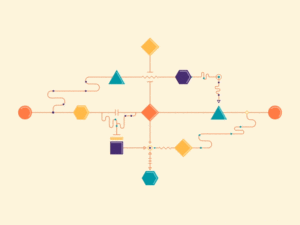I chose the wrong data science course and how you can learn from my mistake
The field of Data Science is ever-growing. People from all walks of the IT sector are getting trained in data science as it seems to be one of the most promising career paths of the future, If you know your way around the field, then you know that data science is exactly that, a science. Not just a part of IT and business. A lot of people are opting for data science online training to build a solid career in data science. But what if I told you, that one of the biggest mistakes you can make is choosing the wrong data science online training course and wasting your precious time? Not only that but there are a lot of mistakes you can make while self-studying for data science. This article can help you refrain from making these mistakes and tell you which path will take you to the top fast.
Some Common Mistakes People Make while Learning Data Science
Now that we have delved into the topic, let us talk about some of the most common mistakes people make out of misconception while learning data science.
Choosing the Wrong Course

You will have a lot of choices to choose from if you want to learn data science. There are many courses, books, videos and blogs at your fingertips. But overwhelming yourself with options is not the right way to go. Instead, focus on the courses that match your learning style and choose books and blogs that seem easy to you.
You have to slowly level up in this field and it can take a long time. One of the courses that can help you in this field is the IHUB Data Science and Machine Learning certification course. Which is an IIT Data Science Certification Course to help people get started on their career path as data scientists. It is a comprehensive course that teaches you the basics of data science and machine learning.
Lack of Projects
Learning data science includes a lot of studying, but it also involves a lot of hands-on projects. A lot of the time, people get so immersed in studying that they forget that in order to have a good career in data science, they will also need practical experience in the field. The most important thing to do alongside studying is making sure you work on a project for each thing you learn. That way, you will have real-life experience of what you are studying.
Lack of Time Management and Planning
One of the mistakes aspiring data scientists make while learning the subject is underestimating how much time and commitment it takes to properly learn data science. Another one is lacking a solid plan. Depending on your study methods and what you want to learn, you have to have a future plan for your study course. It should include all the courses, books, topics and projects you want to take on. This way, you will understand the subject better and also manage your time well.
Too Many Research Papers
Last but not the least, make sure you do not get too lost in research papers associated with your topics. It is normal to want to expand your horizons and learn about what the experts have to say about the topic you are pursuing. But often these high-end research papers can be too hard to comprehend for new learners. Better keep these for when you have a better understanding and grasp of the subject.
Conclusion
Now that you have learned which mistakes to avoid while learning data science, you can go about your way to pursue the subject. Remember that you can always learn from your mistakes down the line and make yourself better in the future. Data Science is a very specialised domain and you must be extra careful to avoid the mistakes that have been discussed. Making these mistakes can lead to you wasting your precious time, money and other resources.
For instance, if you do not take up real-world projects and simply keep learning from study material or lessons, you will lack the experience to be job-ready. Companies are also more likely to hire you if you have deployed projects rather than how many courses you have completed. However, a well-rounded certification such as the one offered by Imarticus can help out a lot.





 Leveraging big data has become indispensable for businesses as it helps them provide valuable insights into the market. A
Leveraging big data has become indispensable for businesses as it helps them provide valuable insights into the market. A  The big data career is also gaining traction with the growing demand for data analysts who can assist in the real-time processing of big data.
The big data career is also gaining traction with the growing demand for data analysts who can assist in the real-time processing of big data.
 Starting a
Starting a 



 Other ways by which you can introduce an industry partnership include inviting company speakers, organising crash courses on industry software and even setting up placement interviews at these companies. The more you can help a student get their foot in the door, the higher the chances of them enrolling and recommending.
Other ways by which you can introduce an industry partnership include inviting company speakers, organising crash courses on industry software and even setting up placement interviews at these companies. The more you can help a student get their foot in the door, the higher the chances of them enrolling and recommending.
 A data scientist is critical in companies like these, as they bring expertise to the table and understand the flow of projects much better than anyone else. With a data scientist at the helm, all other players in the process can fall into place. This reduces the pressure on upper management to figure out project flows; they can now leave it to the experts.
A data scientist is critical in companies like these, as they bring expertise to the table and understand the flow of projects much better than anyone else. With a data scientist at the helm, all other players in the process can fall into place. This reduces the pressure on upper management to figure out project flows; they can now leave it to the experts. This is an invaluable opportunity for fresh data scientists as the company takes care of all the costs and only asks for your attention and application in exchange. Adding a
This is an invaluable opportunity for fresh data scientists as the company takes care of all the costs and only asks for your attention and application in exchange. Adding a